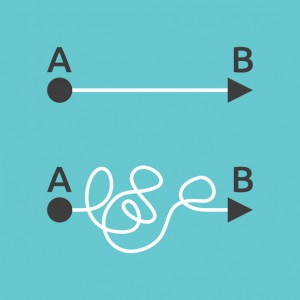Surveys don’t need to be complex to capture the rich data you’re after. In fact, using simple and direct language will minimize the chance of misinterpretation, limiting confusion for both you and your participants.
 As you begin building your survey, start with a clear plan and know what type of data you need to collect. This will make it easier for you to write questions that get to the point.
As you begin building your survey, start with a clear plan and know what type of data you need to collect. This will make it easier for you to write questions that get to the point.
Avoid using big words, complicated words, and words that could have multiple meanings. Your question should be short, simple, and clear.
When drafting your questions, think about your audience and remember that some concepts may mean different things to different people.
Try to be as specific as possible when you ask questions. For example, you might ask,
“Do you exercise regularly?”
But what does regularly mean? Some will think, “Yes, daily!” and some may think, “Yes, every week.” As you can see, there is some ambiguity with the way the question is phrased. Instead, consider asking:
“How many days per week, on average, do you exercise?”
The revised version of this question is more precise and will give you objective answers. By using simple phrasing, you participant will know exactly what the questions means.
Lastly, to help participants focus, avoid asking compound or double-barreled questions. It’s recommended that you break down complex ideas into several questions.
For example, if you ask “Do you exercise regularly and eat well?” and someone answers “Yes!”, what does that mean, exactly? Yes to the first part, the second part, or the whole thing? If you end up with answers you can’t use, what was the point in asking in the first place?
A good way to deal with this is by using a Matrix Grid. This question type is useful when the participant is answering multiple related questions along the same scale. Rather than asking each question individually, using a Matrix Grid conserves space and creates a more participant-friendly experience.
Looking for inspiration or need help getting started? Check out the Survey Bank for some ready-to-use templates.






